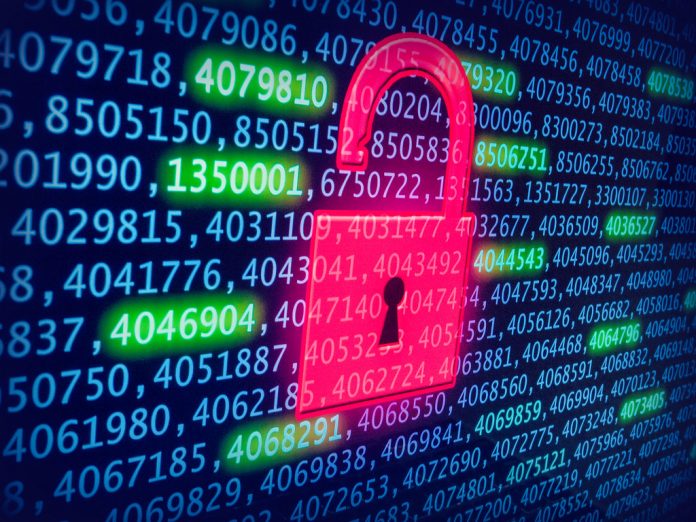This article is written by Namrata Kandankovi, a student of Symbiosis Law School Pune. The author of this article has discussed the validity of Aadhar Card with special reference to Right to privacy and the judgement given by Hon’ble Supreme Court of India in Aadhar Case.
Evolution of Right to Privacy
The inception of the idea of right to privacy in India dates back to 1800, where the British courts invoked the concept of right to privacy, and the same court upheld the right to privacy of a pardanashin woman to have an access to her balcony without the fear of the neighbourhood gaze. The jurisprudence of right to privacy has evolved over a period of time and has been read into article 21 of the Indian Constitution. It has also been held by the Supreme Court that right to privacy is an essential part of personal liberty.
The concept of right to privacy has gone through numerous developments and changes. In the initial stages, privacy was taken as something that is granted on the part of the citizens like that of freedom. Whereas, with various cases being dealt with by the Supreme Court, the concept of right to privacy has seen changes throughout its journey. The very first judgement of the Supreme Court on privacy not being a fundamental right was in the case of M P Sharma v. Satish Chandra.
While dealing with this case, which involved the search and seizure of the documents involving the Dalmia group, the Supreme Court held that the makers of the Indian Constitution have not envisaged fundamental aspect to right to privacy and this was similar to that of the 4th Amendment of the US Constitution. Even in numerous other cases, there has been a parallel line drawn between the American aspect of right to privacy while delivering the judgment of M P Sharma v. Satish Chandra.
It was after nine years of judgment being passed in the case of M.P. Sharma, the matter of right to privacy again came to the court in the case of Kharak Singh v. State of Uttar Pradesh. In the following case, Kharak Singh, an alleged dacoit was subject to surveillance and secret picketing and in addition there were periodic visits paid to his home, and a series of inquiries were held.
When the case was filed by the plaintiff against such developments, the court came out with the verdict following the previous pattern and held that right to privacy does not come under the ambit of fundamental rights. The silver lining of this judgment was the dissenting opinion put forth by the Justice Subba Rao, wherein he held that though the constitution has not declared the right to privacy as a fundamental right, it still remains a very essential ingredient of personal liberty.
It was finally in the case of Govind v. State of Madhya Pradesh, the court finally held that right to privacy falls under the arena of fundamental rights enshrined by article 21 of the Constitution of India. This judgment was however, by a smaller three-judge bench and the bench had further held that the right is not absolute and it can be interfered by the procedure established under the law.
A very recent and a humongous development in the area of right to privacy was in the Aadhaar case, which again raised the question whether right to privacy was a fundamental right and called the attention of the courts for the sake of putting a final end to the saga which was in existence with various changes being brought in it with the passage of time. This will be dealt with in detail in the next segment of the article.
What is Aadhaar?
Aadhaar which was introduced in the Rajya Sabha in December 2010 by National Identification Authority of India Bill, is a twelve digit unique identification number issued to the citizens of India by the central government. The issuance and management of Aadhaar come under the authority of Unique Identification Authority of India (UIDAI).
It is to be understood that Aadhaar is evidently an identification document. Aadhaar records and verifies the details of every resident Indian, which includes demographic and biometric data. In addition to this, it should be taken note that Aadhaar is not meant to replace the already existing identification documents like that of PAN cards, driving licence, passport etc. But is to be used as a one-time identification number and in addition to this, the financial institutions, banks and telecom companies can use aadhaar as a know-your-customer(KYC) verification mode and can also maintain profiles.
When the case of aadhaar was challenged in the Supreme Court, it was maintained by the court that the government does not have the right to make aadhaar mandatory. The government was permitted to use it for some welfare schemes and not all welfare schemes and further held that the government cannot be stopped from using aadhaar for non-welfare schemes. The list released by the government which makes aadhaar mandatory in specific schemes(both welfare and non-welfare schemes) includes the following
- Iron ore, limestone and beedi workers, need aadhaar to avail household subsidiary.
- People who wish to avail welfare schemes under the integrated department of horticulture and Janani Suraksha Yojana need mandatory aadhaar.
- Under the ministry of women and child development, aadhaar is made mandatory for the ones who wish to avail training under Integrated Child Development Services.
- In order to avail benefits under Grih Kalyan Kendra scheme, aadhaar is made mandatory.
- For the purpose of financial support under National Women development Scheme aadhaar was made mandatory.
The inception and chronology of Aadhaar case
- Birth of Aadhaar 2006-07– It was the UPA government which conceptualised a scheme for unique identification for the below poverty line families. Following this, the scheme of aadhaar was approved by the then government along with its principle.
- September 2009– The centre constituted the Unique Identification Authority of India UIDAI for the purpose of issuing of Aadhaar to the citizens. Nandan M. Nilekani, the architect of Aadhaar was appointed as the first chairman of UIDAI.
- 2012– The retired justice K S Puttaswamy filed a writ petition in the Supreme Court of India. Puttaswamy, the retired Karnataka High Court judge challenged the policy of the government which made aadhaar card mandatory for every individual and the plans of the government to link biometric ID of the citizens with various government schemes. He further laid down his contentions that aadhaar violates equality and right to privacy granted by the constitution of India to every citizen.
- 23rd September 2013– The Supreme Court in an intern order held that no citizen should be made to suffer for the reason of not having an aadhaar card even when it is made mandatory by the government for the purpose of availing of certain benefits.
- 24th March 2014– The Supreme Court passed another order in this year which asked the agencies to revoke any orders made by them, which makes aadhaar mandatory for availing benefits.
- February- March 2016– The Supreme Court’s statement given in identity verification in the case of Lokniti Foundation v. Union of India was interpreted by the Modi government, and in furtherance of this, the government made the linkage of mobile number with aadhaar mandatory.
- June 2016- The centre issued guidelines to the states to link the aadhaar with the domicile and caste certificates.
- September 2017– The constitutional bench upheld the hearing of the validity of aadhaar, but at the same time, struck down the provision which made linking of aadhaar with the bank account, school admissions and mobile phones mandatory.
- January 2018– A five-judge bench began the hearing on the aadhaar case again.
- May 10 2018- The Supreme Court completed the final hearing on the long-standing aadhaar case and further reserved its verdict on the case.
The final judgement on Aadhaar
The Supreme Court, in its final judgement on Aadhaar upheld the validity of it and further stated that the Aadhar Act does not violate the right to privacy when a person agrees to share his biometric data. However, the Supreme Court barred the private companies from making use of aadhaar card for the purpose of KYC authentication. At the same time the apex court held that aadhaar will still be in use for various other purposes which would include PAN card and ITR filing.
Certain important aspects of the judgement in the case of K.S Puttaswamy v. Union of India are to be viewed in a detailed sense, for the purpose of better understanding of the ruling of the court on the issue of right to privacy concerning aadhaar.
- While deciding the case of K S Puttaswamy v. Union of India, a five constitutional judge bench which was headed by the then chief justice of India Deepak Misra held that aadhaar would be mandatory for the sake of filing of income tax returns and also for the allotment of Permanent account number (PAN). Hence, a taxpayer or a person in need of PAN card cannot shun from the aadhaar.
- The apex court ruled that aadhaar is no longer a requirement for the students appearing for CBSE, NEET and UGC exams. In addition to this, the court also held that schools are no longer allowed to seek aadhaar for the purpose of admission.
- When it comes to availing of facilities from the welfare schemes brought by the government aadhaar is a must. Also, for the sake of making use government subsidies aadhaar is a must as the subsidies schemes are brought into effect for the very purpose of upliftment of the poor and the people from the marginalised sectors.
- The Supreme Court, while delivering the judgement, went a step ahead and struck down section 57 of Aadhaar Act and termed it unconstitutional. By undertaking this measure, the Supreme Court ensured that no private entity or company can now seek aadhaar details from its employees.
- While delivering the judgment, the top court also struck down the National Security Exception under Aadhaar Act. This particular act was undertaken by the government to indirectly provide greater privacy to an individual’s aadhaar data and the same was ensured by way of restricting the government access to it.
- The Supreme Court while delivering the judgment made a special exception to children and further held that no child should be denied of the governmental schemes if he or she does not have aadhaar.
Explanation of Right to Privacy
With the fallout of the Aadhaar (Targeted Delivery of Financial and other Subsidies, benefits and Services) Act of 2016, there came a requirement for the collection and usage of personal data of the citizens and in support of this move, the government put forth its views that, the collection of personal data and enrollment of each citizen under the aadhaar act would further make it beneficial for the lives of millions of poor people as they would now be able to directly avail education, public benefits, subsidies, food, home and shelter and other basic amenities. The government further claimed that aadhaar was a panacea to put an end to the existing negative elements in the society like that of corruption, money laundering and terror funding.
On the other hand, in contrary to the statement of the government the Supreme Court expressed its apprehension on the aspect of aadhaar by bringing the attention of the public towards the risks incurred in making the personal information of individuals quickly falling in the hands of the private entities and service providers which might result in dire consequences.
By taking a look at the recent developments it can be said that numerous national schemes like that of Aadhaar, DNA profiling, Crime and Criminal tracking network and system (CCTNS), National Intelligence Grid- NATGRID, Rashtriya Swasthya Bima Yojana- RSBY, Brain Mapping, Reproductive Rights of Women, Privileged Communication all these involve the collection of personal data like that of bodily samples, fingerprints, iris scans and there is an additional need for this data to be stored in an electronic form. Keeping all this in mind it should be understood that, this may lead to the grave danger of data leakage.
In order to curb the occurrence of a data breach, the Supreme Court had repeatedly been asking the government if it has plans to set up a robust mechanism for data protection. In response to this, the government had stated that a committee of experts under the leadership of former Supreme Court judge B N Srikrishna had already been constituted on July 31, 2017 and this committee works for the identification of key data protection issues and in addition to this, the committee also suggested a draft data protection bill.
The opinion expressed by various judges
The Supreme Court delivered the much discussed and debated Aadhaar case comprised of five judge bench which included the then Chief Justice of India Deepak Misra, Justice A K Sikri, Justice Ashok Bhushan, Justice A M Khanwilkar and justice D Y Chandrachud. This constitutional bench upheld the validity of aadhaar barring a few of provisions which were related to disclosure of personnel data, use of aadhaar ecosystem by private companies and cognisance of offence. The majority opinion was laid down by Deepak Misra, A K Sikri and Khanwilkar. While justice Chandrachud and Ashok Bhushan gave the dissenting opinion.
The majority opinion by Deepak Misra, A.K. Sikri and Khanwilkar
- Considering the aspect of obtaining of aadhaar card, it was laid down by the bench that, once the biometric information is received and the aadhaar is issued, there is no possibility of obtaining a duplicate card as the information remains intact with the UIDAI, after the issuance of the same. Whenever a second attempt is made for enrolling to the aadhaar, the biometric data would immediately match the already existing information. Consequently, the second attempt would be rejected. The bench in support of this point held that it is for this reason aadhaar was named Unique Identification (UID).
- The bench while examining the said law, which was said to be in violation of the right to privacy, took into consideration the question whether the court was supposed to apply ‘strict scrutiny’ standard or ‘just, fair and reasonable standard’. In the particular judgment of aadhaar, the court adopted the concept of ‘just, fair and reasonable test. This was adopted by the court as it aligned with the reasonable restriction which the court has the power to place reasonable restriction as provided under article 19 of the Indian Constitution.
- Dragging the attention of the public to the concept of Surveillance State, as there were arguments put forth that the aahaar was putting in place a surveillance state. The court dismissing all the arguments of aadhaar leading to creation of a surveillance state held that during the enrollment for aadhaar minimal biometric data like that of iris scanning and fingerprints are collected and the UIDAI does not collect data like that of location, purpose and details of the transaction and hence the information collected for the purpose of aadhaar remains in the silos and further the merging of silos is prohibited.
- After going through a detailed discussion on the aspect of right to privacy, the bench held that not all matters pertaining to an individual fall under the ambit of inheriting the right of privacy and only those with a reasonable expectation of privacy are protected under article 21 of the Indian Constitution.
- The court in order to adjudge the reasonableness of invasion of privacy laid down a triple test for aadhaar in which it came out with the verdict that aadhaar was backed by a statute, that is the aadhaar act. Moreover, it was also held by the bench that the act serves the legitimate state aim which can be inferred from the introduction of the act and also the statement of objects and reasons of the act which strive to reflect the aim of the act.
- The bench to arrive at a particular conclusion regarding the aspect of right to privacy considered under its ambit three significant tests which were
- The Existence of law.
- Such acts are required to pass the test of proportionality.
- A Legitimate State interest
The court finally concluded that all the above tests were satisfied while delivering the aadhaar judgment.
“Aadhaar Act is unconstitutional”: A fiery dissent by Justice D.Y. Chandrachud
While the majority of the bench upheld the constitutional validity of the aadhaar act, Justice Chandrachud strongly dissented from the bench in his opinion and further laid strong contention to establish that aadhaar is unconstitutional in its very nature.
- While putting forth his empathic dissent from the majority, Justice Chandrachud held that Constitutional guarantees cannot be compromised by the vicissitudes of technology.
- The expression of dissent on the aadhaar by Justice Chandrachud started with the very legislative process of aadhaar. While majority of the bench expressed their opinion which was in line with Justice Sikri’s contention that there was nothing wrong with the aadhaar, justice Chandrachud condemned the introduction of Aadhaar and termed it to be ‘Fraud on the Constitution’.
- The next aspect regarding the expression of dissent by Justice Chandrachud to be taken note of is the introduction of aadhaar as a money bill. Justice Chandrachud laid down that passing aadhaar as a money bill was against the notions of the Indian Constitution. In addition to this he further laid down that the act of the speaker of Lok Sabha allowing the aadhaar to be passed as a money bill should be subject to a judicial review.
- Justice Chandrachud agreed on the same lines with the majority of the judgment of the on the aspect of Aadhaar Act being a legitimate act, but at the same time he laid down that the act does not create any kind of robust mechanism for the protection of personal information of the citizens.
- He further laid down that allowing private parties to access individual’s data would lead to profiling and this in turn causes ascertaining of political views of a citizen. Hence, he put forth his opinion that the data should all the time vest with the individuals itself as it is of prime importance to them and not following the same may lead to the hampering of the situation.
- Lastly, he contended that now it is impossible to live without aadhaar in India, but at the same time, it is violative of article 14 of the Indian Constitution. He stated that there would be a grave chance of infringement of the right to privacy if the aadhaar is seeded with every other database.
Is Aadhaar in Jeopardy?
During the time of discussions on the aadhaar and the law being approved by the parliament, aadhaar was considered to be serve the interests of rural population and the marginalised sector by enabling them to access the entitlements and governmental schemes which were meant for their upliftment, but during the course of time, it has come to the notice of the population that aadhaar has just made the enabling of these schemes even more difficult.
Reetika Khera, a social scientist stated in one of the interviews with Times of India views in the following manner- She initially believed that aadhaar is a remedy in search of disease, but now she believes remedy is worse than the disease itself.
A study held during the end of October 2017 revealed that approximately 500 million subscribers had already linked their aadhaar with their mobile numbers. The prime question to be taken under consideration here is, if the government brought aadhaar into effect for the purpose of facilitating the access to its scheme, why was there a need to force people to link their mobile numbers with aadhaar? why is the government linking aadhaar with the telecoms? and who is to take responsibility regarding this?
There even arises a need to understand the onus behind linking aadhaar to various other personal details like that of bank accounts, health insurance and etc. This calls for immediate attention as it leads to the creation of the digital profile of a person based on the data which is aggregated and there is every chance of this data being misused.
The lack of protection of the privacy of an individual can further be proved by the provision of the new e-aadhaar password. The e-aadhaar password is a combination of the first four letters of a person’s name and his or her year of birth. There is a highly likely probability of this password being easily known by friends, family, acquaintances and often strangers or security guards who would want to confirm the identity of a person before letting him or her inside the office, building, theatre or airports.
Months after the aadhaar act coming into force, the Karnataka government in its statement pointed out that its department had faltered in terms of issuance of the aadhaar cards. The state’s top executive took the notice of the issue that most of the department did not have the knowledge about how to seed the aadhaar into the database.
In addition to this several complaints were registered throughout the state regarding the mismatch in the number of aadhaars issued which had actually surpassed the population of the state in totality. There were even complaints of denial of genuine services to the beneficiaries.
A number of activists even put forth the contention that the introduction of Karnataka Aadhaar Act would further lead to an increase in the number of cases where genuine beneficiaries are denied services.
Conclusion
From a detailed analysis of the case of Aadhaar, it can be finally said that the case has gone through various changes from the date of its origin, there were numerous issues taken into consideration like that of protection of citizens at large, serving the interests of justice and upholding the concept of privacy.
Thinking from the perspective of various people it can be said that, there arises a difference when it comes to interpretation of the aadhaar case from one person to another and the same was even seen in the argument put forth by the five judge bench, as there was a variation in the contentions put forth by three of the judges who upheld the constitutional validity of aadhaar and Justice Chandrachud strongly dissented from the majority judgement and his arguments were in contrary to that of the majority of the bench.
Further, there is a dire need to bring changes and cover the loopholes which exist in the aadhaar case. Otherwise, it would again pose as a threat to an individual’s right to privacy. There is also a need to analyse if the aadhaar is serving the purpose which it was meant for and if not there needs to be a mechanism which needs to be adopted to make aadhaar serve its real purpose. A meticulous look into the case, analysing the demerits and merits and trying to curb the faults and the negative aspects is the need of the hour.












